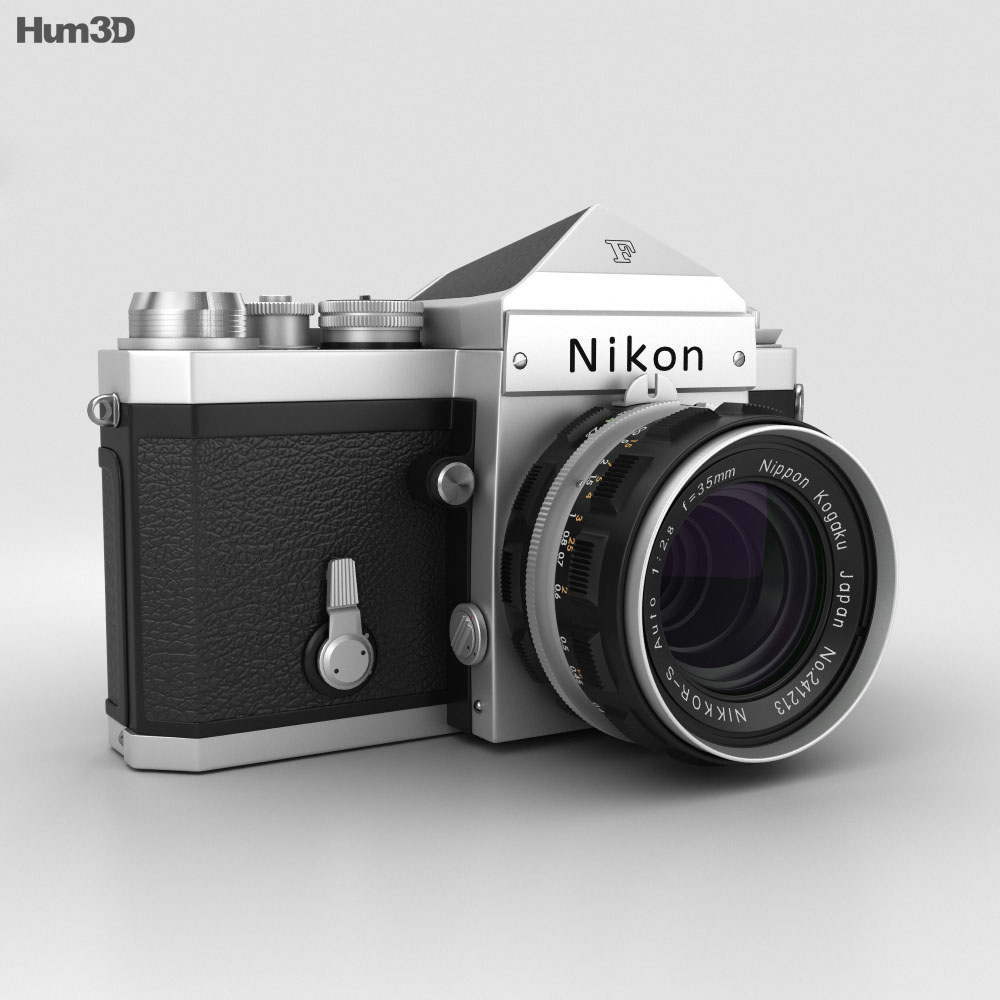


F-mount lenses also typically have aperture rings that turn clockwise to close. This convention is also used in Pentax K-mount and Sony A-mount lenses but is opposite of the direction normally used by Canon. Nearly all F-mount lenses have zoom and focus controls that rotate in the clockwise direction (as viewed from behind the camera) to increase focal length and focus distance respectively. However, Nikon lenses designed for film cameras will work on Nikon digital system cameras with the limitations noted above.į-mount lenses lock by turning counter-clockwise (when looking at the front of lens) and unlock clockwise. DX lenses may produce vignetting when used on film and FX cameras.

Most Nikon F-mount lenses cover a minimum of the standard 36×24 mm area of 35mm format and the Nikon FX format, while DX designated lenses cover the 24×16 mm area of the Nikon DX format, and industrial F-mount lenses have varying coverage.

NIKON F MANUAL
Many manual focus lenses can be converted to allow metering with consumer Nikon bodies by adding a Dandelion chip to the lens. For example, many electronic camera bodies cannot meter without a CPU enabled lens the aperture of G designated lenses cannot be controlled without an electronic camera body non-AI lenses (manufactured prior to 1977) can cause mechanical damage to later model bodies unless they are modified to meet the AI specification and AF-P lenses (introduced in 2016) will not focus, even manually, on cameras introduced before roughly 2013. Incompatibilities do exist, however, and adventurous F-mount users should consult product documentation in order to avoid problems. Many current autofocus F-mount lenses can be used on the original Nikon F, and the earliest manual-focus F-mount lenses of the 1960s and early 1970s can, with some modification, still be used to their fullest on all professional-class Nikon cameras. The F-mount has a significant degree of both backward and forward compatibility. Numerous other manufacturers employ the F-mount in non-photographic imaging applications. F-mount cameras include current models from Nikon, Fujifilm, Sinar, JVC, Kenko and Horseman. In addition to Nikon's own range of " Nikkor" lenses, brands of F-mount photographic lenses include Zeiss, Voigtländer, Schneider, Angénieux, Samyang, Sigma, Tokina, Tamron, Hartblei, Kiev-Arsenal, Lensbaby, and Vivitar. The F-mount has been in production for over five decades, making it the only SLR lens mount which has been produced for over 50 years. The F-mount is also popular in scientific and industrial applications, most notably machine vision. Over 400 different Nikkor lenses are compatible with the system (other details can be found at the Nikkor The Thousand and One Nights site ). The large variety of F-mount compatible lenses makes it the largest system of interchangeable flange-mount photographic lenses in history. The Nikon F-mount is one of only two SLR lens mounts (the other being the Pentax K-mount) which were not abandoned by their associated manufacturer upon the introduction of autofocus, but rather extended to meet new requirements related to metering, autofocus, and aperture control. 6.3.3 Lenses with integrated autofocus motors.6.1.2 Electromechanical and data communication.The real message here is Nikon thinks APS-C is dead - Z mount is definitely FF and a bit larger. In any case, these look like a great start for Nikon (and perhaps a boost for Sony too, if some of the guts are Sony made, as at least the sensor probably is). Overall, these Nikons sure look like Sony follow-ons: Z6=A7III, Z7=A7RIII, FTZ=LA-EA3 I'd even bet the Z mount was originally thinking about the small MF Sony sensor. which is quite a twist: Nikon suddenly goes from least-adapter-friendly to most. This could probably even adapt Sony E/FE lenses. The big advantage to Z is the wide mouth and just 16mm flange distance. No doubt, there will be reverse-engineered plain Z adapters within weeks of Z bodies shipping in quantity. MFT requires membership in a trade group, Sony only gives mechanical specs to companies that apply and are approved (but sometimes more to friends). Just to be clear, neither MFT nor Sony E/FE are "open" mounts.


 0 kommentar(er)
0 kommentar(er)
